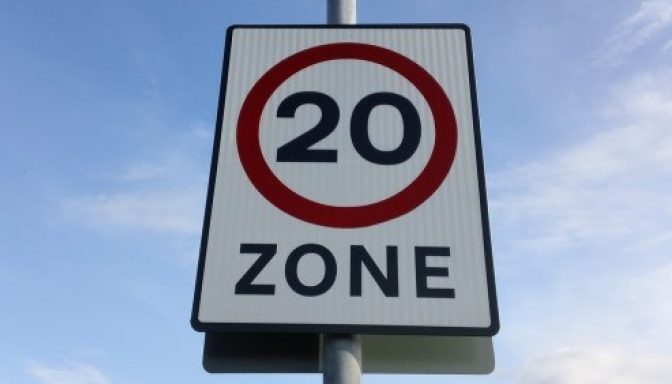Everyone understands the concept that the faster a vehicle is travelling, the greater the risk. Try it out, the next time you are at a party, or (more likely) idling time at the beginning of a video call. Pick anyone – and ask them this: “If you saw a car driving on a narrow residential road in a city centre or in the suburbs, at 70mph, what would you think?” I am willing to bet that literally everyone will say they would think that the driver was being reckless, dangerous, and putting others on the road at risk of death or serious injury.
The concept, at this level, is intuitive. Why, then, do substantial numbers of drivers exceed speed limits, at least a little bit, at least some of the time? I suspect partly it is down to the level of speeding at which people seem to begin to understand or notice the behaviour as ‘speeding’.
The free flow data from Great Britain in 2019 can help us here. They show that around 54% of cars on 30mph limit roads are exceeding the speed limit; this drops to 6% when considering those travelling at 10mph or more over the limit. Great – you might say. The very serious offenders are rare; people understand the need to not speed ‘too much’. Common sense prevails.
Except… there’s a problem. We know that the risk of death or serious injury goes up even with modest increases in speed; this is especially true for pedestrians struck by car drivers but also for car drivers themselves in side and frontal impacts. Furthermore, most pedestrians who die are involved in collisions with vehicles at these lower speeds – not the ones travelling at more noticeable ‘extreme’ speeds.
In short, it is not just the extreme speeders who increase the risk; it is all of us, if we stray even slightly over the limit. Ask a different question to that person at your party or at the beginning of your video call: “If you saw hundreds cars driving on a narrow residential road in a city centre or in the suburbs, at 33mph, what would you think?” I expect the answers will lack the broad agreement I predict in the 70mph example.
It is not as easy to even notice the many hundreds of vehicles going ‘slightly faster’ than they should, as it is to notice the one or two vehicles which ‘stand out’ at much higher speeds. And it is certainly not as easy to conceptualise the former group as presenting a risk to life and limb. Make no mistake though; both groups present a non-trivial risk to themselves and to others around them.
Road safety week is not just for drawing attention to the very reckless few, it is to remind the rest of us – the slightly reckless many – that we have our part to play.
Shaun Helman
Chief Scientist for Behaviour, Data and Mobility, TRL

